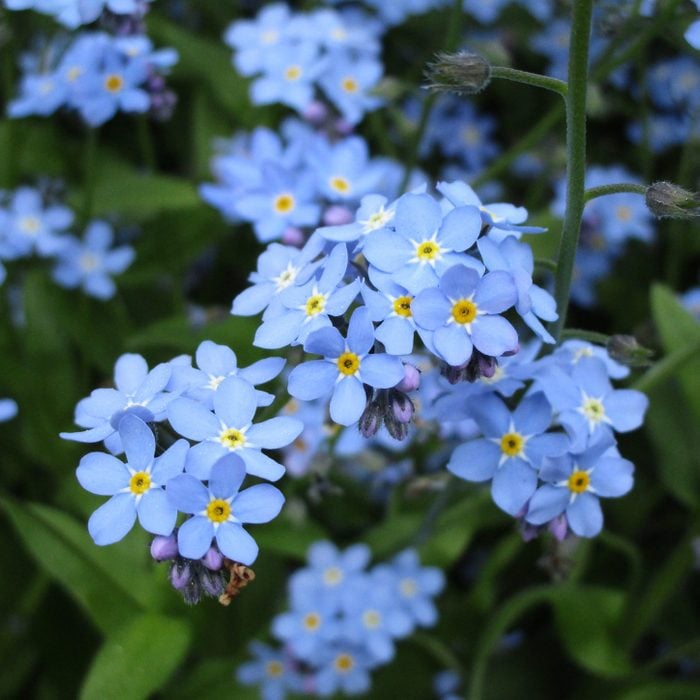
In praise of shade
“Shade gardening is overlooked by many homeowners, sometimes even by avid gardeners,” says Luke Miller, veteran garden editor and designer, who notes that it’s true that there are many more opportunities for colorful flowers in a sun-loving garden. “But here’s the rub: shade gardens can be quite attractive themselves. And they almost always take less maintenance, watering and fertilizing than sunny gardens.” Ready to turn that neglected spot in your yard into a beautiful oasis? Read on to learn about the best shade plants, which also happened to be some of the best low-maintenance plants.
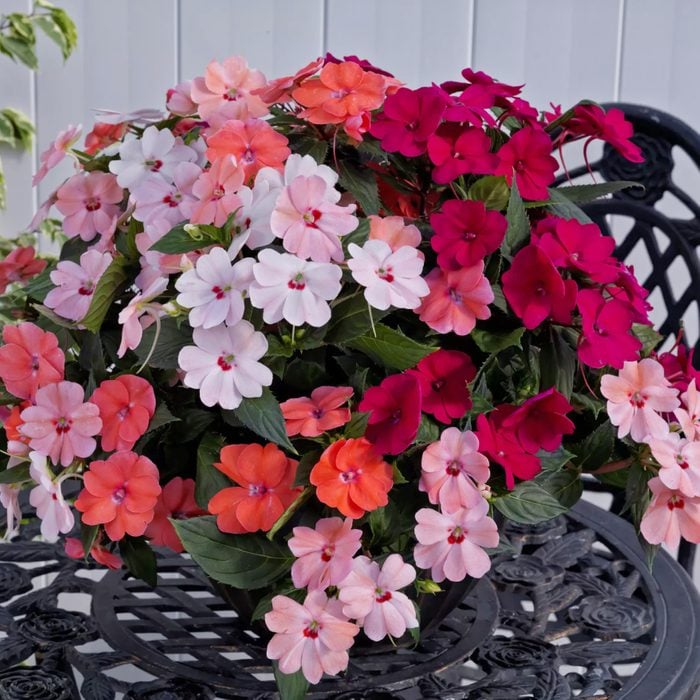 via target.com
via target.com
via target.com
If you love having a kaleidoscope of colors in the garden from white, light pink, salmon to burgundy or bright red, the flowers of this shade plant will make your day. “These bright annual flowers can become a spot of tenderness in any dark corner of your garden,” says Bryan McKenzie, landscape designer, avid gardener, and co-founder of Bumper Crops Times. Impatiens love the shade and do well in pots or to line borders or garden beds. “It’s recommended to plant impatiens close to each other to let them grow faster and form beautiful vivid banks,” says McKenzie. Ready to get started? Then you’ll want to know the best places to buy plants online.
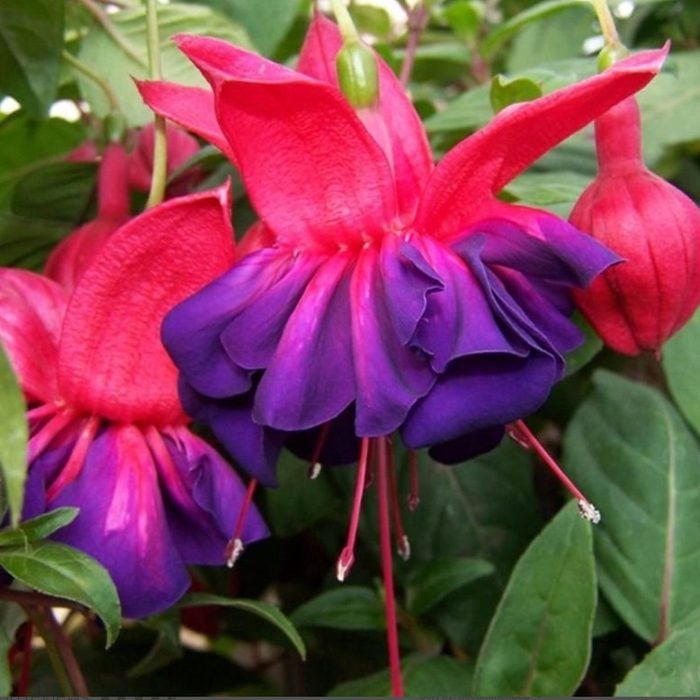
via etsy.com
Fuchsias will provide plenty of color and vibrancy in your garden and these intricate plants are beautiful to admire, too. Plus, their curious design lends itself to pollinators, such as hummingbirds, who visit these flowers frequently. If you want more birds in your garden, you’ll definitely want to consider fuchsia, a shade plant that thrives in partial to full shade and will bloom all summer long. But it’s important to know fuschias can’t handle the cold, which is why most gardeners grow them in baskets and hang them outside only when it gets warm enough, explains Mckenzie. If you want to spruce up the inside of your home with greenery, check out the best indoor plants.
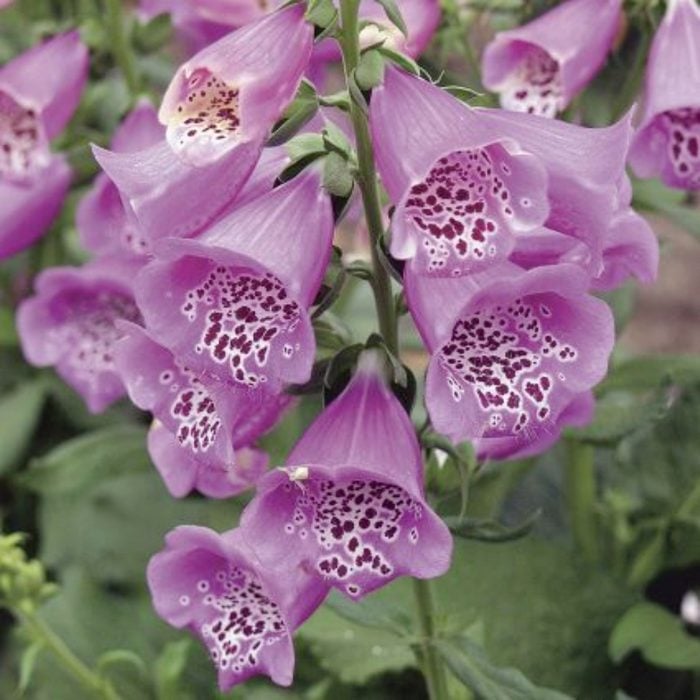 via naturehills.com
via naturehills.com
Foxglove (Digitalis)
With their tall, thick stems and numerous bell-shaped flowers ranging in colors from white to pinks and purples, foxgloves are a pretty addition to any garden. Plus, “Foxglove is one of the easiest plants for beginners to take care of,” McKenzie says. But if you’re expecting flowers the first year of planting, you’ll be disappointed because these shade plants won’t bloom until the following year. McKenzie explains, “This biennial plant starts flowering only in the second year as the first is needed to grow foliage. It dies after the first flowering. However, you can reseed it yearly to get them blooming every year.” It’s important to know that Foxglove needs lots of shade, especially in hot weather. “The hotter the summers, the more shade the plant needs. It hates the heat,” says Rick Kingsbury, landscape designer and owner of Stoney Acres, a landscaping firm in Benton, Pennsylvania.
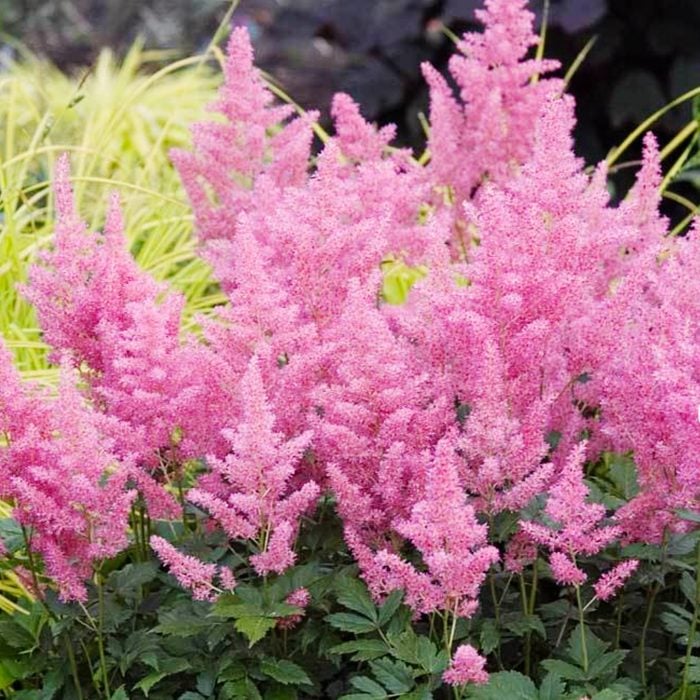 via greatgardenplants.com
via greatgardenplants.com
via greatgardenplants.com
Astilbe, or false goat’s beard, is a shade plant with fern-like leaves with tall feathery-looking flowers, often called plumes. There are several species of these plants and some grow in mountainous regions. These shade plants will add plenty of brightness to your garden because they come in an array of colors. “The leaves can be bronze, blue-green, wine-red, pale green, or dark green, while the bright torches of small flowers grow in white, pink, blue, red, and more,” says McKenzie.
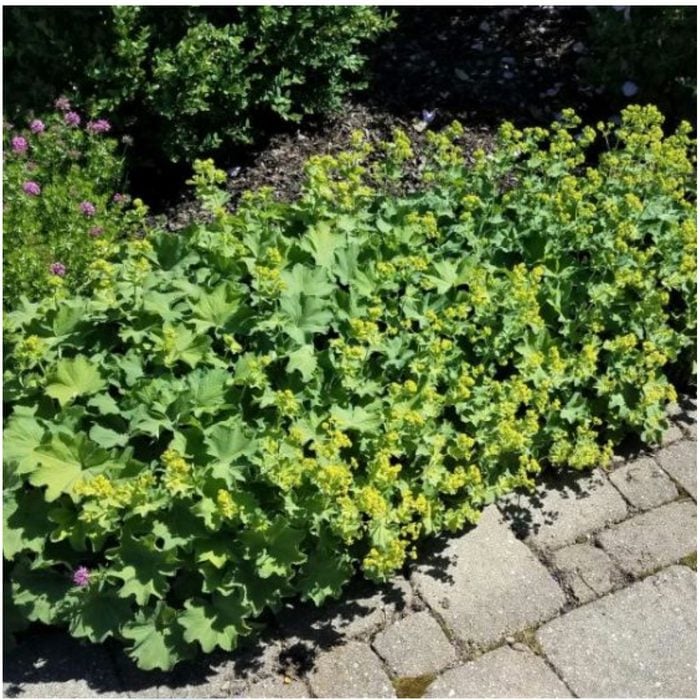 via naturehills.com
via naturehills.com
via naturehills.com
With its wide scalloped grayish-green leaves and bright chartreuse flowers, lady’s mantle is a nice addition to a shade garden. “If you want a perennial with a long lifespan that requires minimal attention, this one is a great choice for shady areas of your garden,” says McKenzie. This is an easy plant to grow and care for and it’s ideal for a low-maintenance garden. “Clumps of yellow-green flowers will change the look every year, while the pleated leaves will hold the large beads of rainwater, breaking the laws of physics,” explains McKenzie. Consider expanding your flower garden to edible plants too with the easiest foods to grow at home.
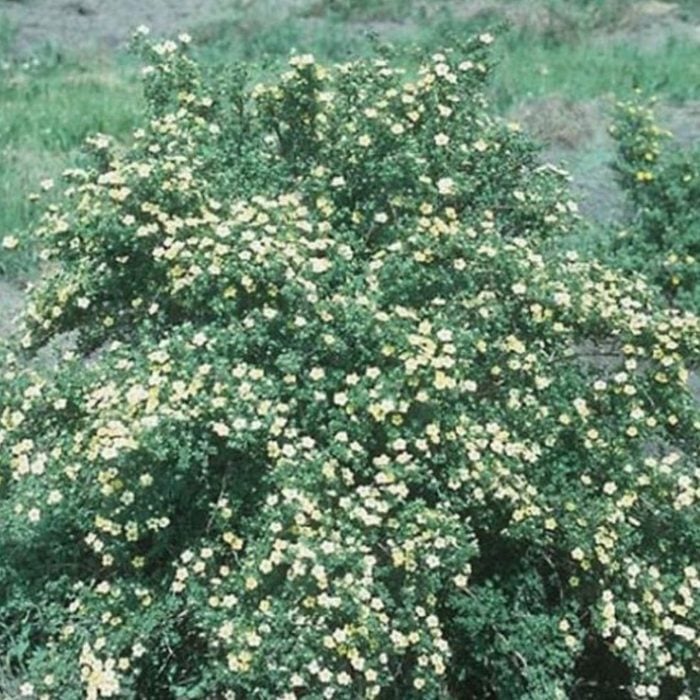 via naturehills.com
via naturehills.com
via naturehills.com
Primrose plants are easy and relatively simple to grow—they typically begin to bloom in spring which continues on throughout the summer. The best part is they don’t need too much attention or special care to thrive. “Shade and well-moisturized soil are all that these beautiful flowers need to flourish,’ says McKenzie. Primrose has numerous varieties and flowers in a rainbow of hues so if you want a colorful garden, this plant is for you. Plants occasionally need a natural fertilizer so consider saving money and helping the soil by making your own compost at home.
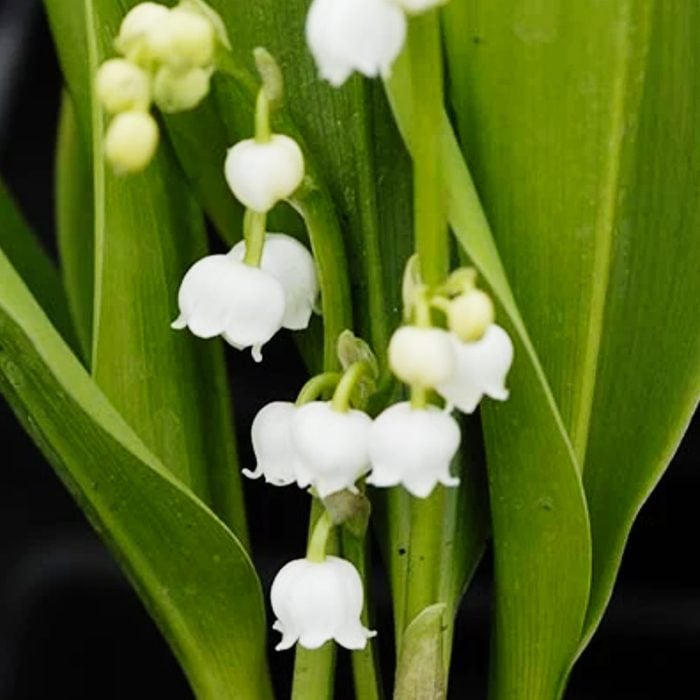 via greatgardenplants.com
via greatgardenplants.com
via greatgardenplants.com
These delicate flowers associated with May Day in France emit an enchanting fragrance in late spring and early summer and will brighten up those shady dark corners of your yard. “Lily of the valley is a perfume factory,” Miller says. “Not to mention the bell-shaped flowers are adorable.” If you’re just starting out, check out these expert gardening tips for beginners.
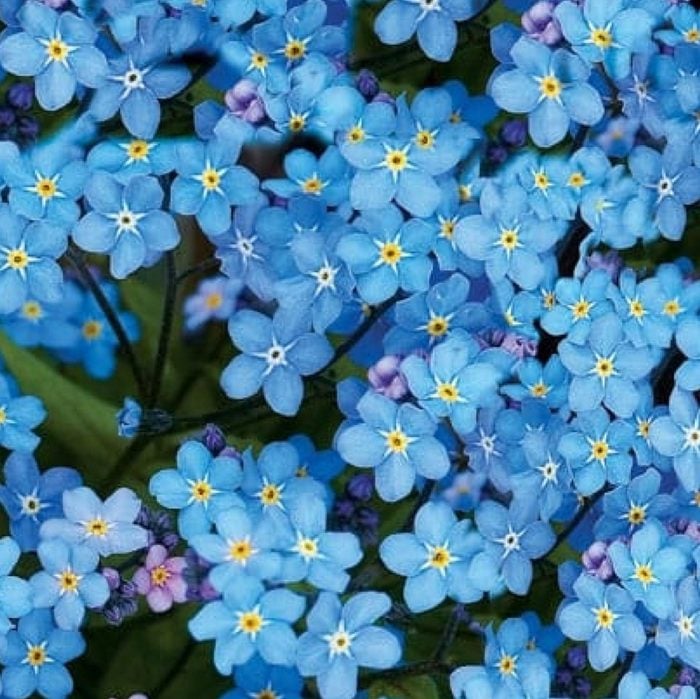 via etsy.com
via etsy.com
via etsy.com
Add clouds of color to your garden with a patch of tiny azure-blue flowers. Alpine forget-me-nots thrive in dry shade, conditions that can be particularly difficult. These are considered mountain plants, which means they love tree coverage and shade, says Kingsbury. “Care is minimal, and they grow best in a damp, shady area, but can adapt to full sun.” These are the best low-light indoor plants.
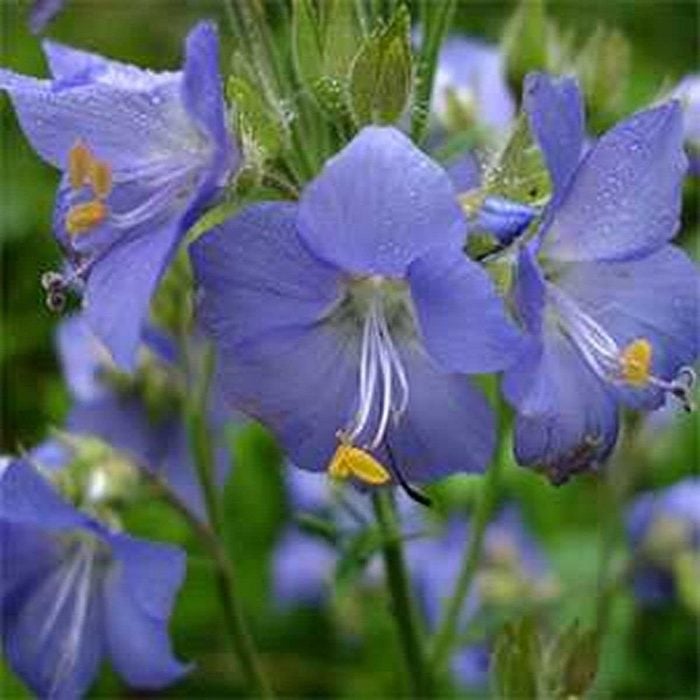 via amazon.com
via amazon.com
via amazon.com
These bell-shaped, purple perennials adapt well to flower gardens and tolerate both shade and sun. For the happiest flowers, Miller recommends “mulching with shredded leaves to copy what happens in nature. The shredded leaves will quickly become humus, which is like forest duff that nourishes plants and protects the soil. It also adds a lot of microbes, which are beneficial to plant roots.” Discover the health benefits of gardening.
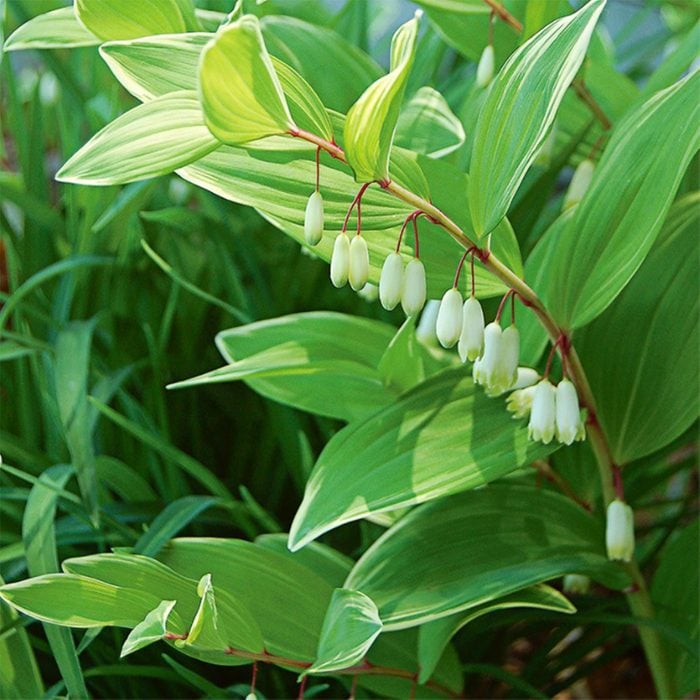 via whiteflowerfarm.com
via whiteflowerfarm.com
Solomon’s seal (Polygonatum)
Gracefully arching stems support clusters of tubular white flowers and long, bright green leaves in this plant that are ideal for a shady border. Solomon’s seal does benefit from a touch of sun. “This plant with large elongated leaves and yellow flower earrings likes shade and moisture but can easily survive drought and direct sunlight, which makes it one of the easiest options for beginners,” says McKenzie. Knowing how much sun and shade a plant need is important to its growth and success.
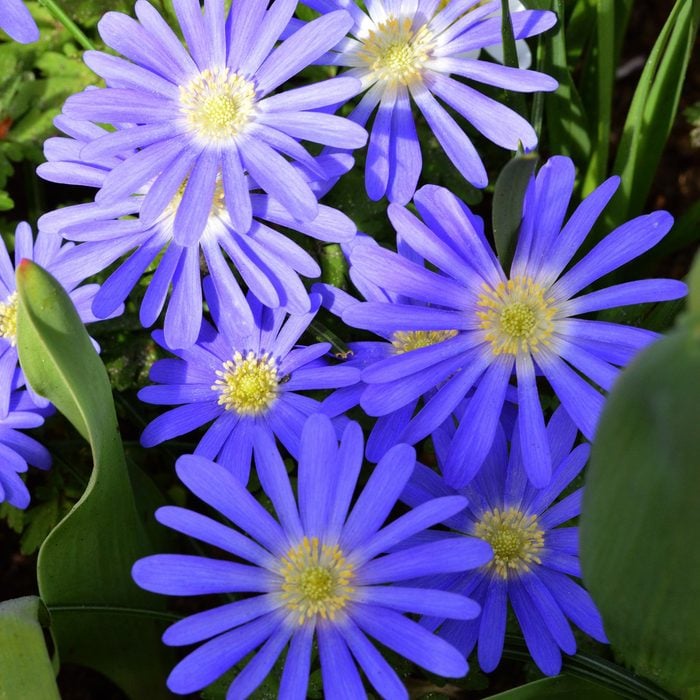 via dutchgrown.com
via dutchgrown.com
Grecian windflower (Anemone blanda blue)
Also known as the winter windflower or blue shades, this plant is part of the buttercup family. Windflowers are planted as bulbs and they thrive in partial shade, typically blooming in mid-late springtime. “This low perennial loves partial shade or full sun, moist soil, and easily adapts to various climate challenges,” McKenzie says. These purple and blue, daisy-like flowers will add a festive touch to your patch and if you’re a new gardener are a rather easy flower to grow. McKenzie recommends, “Planting large groups of blue shades around shrubs and trees will turn the spots of your garden into majestic colorful mats.”
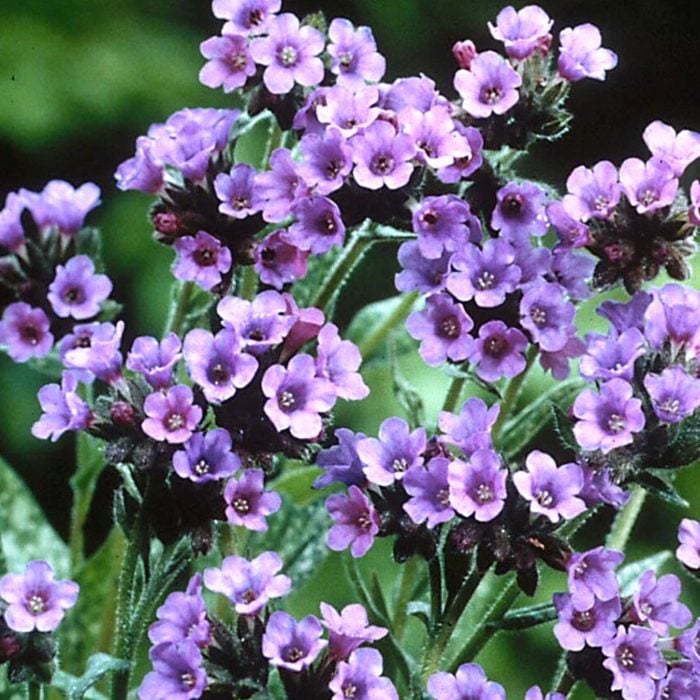 via greatgardenplants.com
via greatgardenplants.com
Lungwort (Pulmonaria)
McKenzie calls the lungwort “a shade-loving miracle for any garden.” Considered a good ground cover plant, the lungwort has hairy, dark green leaves that are spotted with white and flowers in spring. “The wonderful foliage of this showy plant can be spotted with silver or even be entirely silver, while the flowers can range from white to pink and blue—even on the same plant,” McKenzie says. Check out these 26 things your florist won’t tell you.
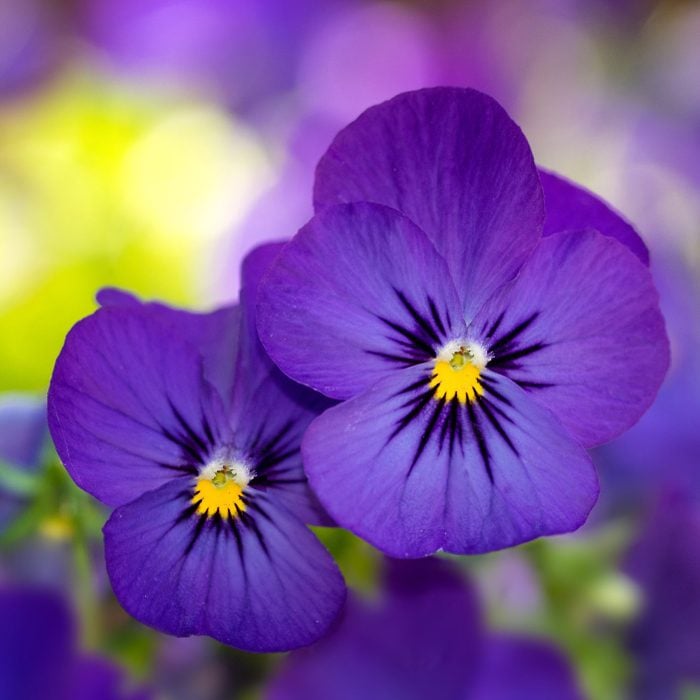 Mimi Ditchie Photography/Getty Images
Mimi Ditchie Photography/Getty Images
Viola (Viola tricolor var. hortensis)
Viola, 400 to 500 species of flowering plants, typically have heart-shaped and scalloped-shaped leaves and five-petaled flowers that come in scores of colors. “They bloom best when it’s cold, so you can start and end the warm season with them.,” McKenzie says. “In regions with warm winters, violas may bloom through winter as well.” Not only do they add colors to your garden, but you can also eat them, too. “Surprisingly, violas are edible beauties that can be added to salads, cakes, and cold drinks,” he says.
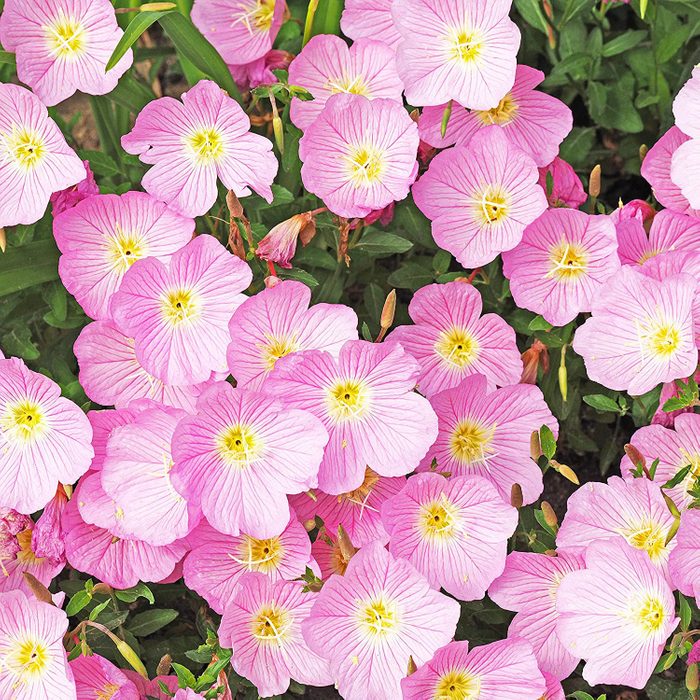 via amazon.com
via amazon.com
Cowslip (Primula veris)
Who needs sunshine when you have a carpet of yellow or red flowers with crinkled bright-green foliage? Shade plants that produce beautiful flowers like Cowslip provide plenty of brightness to any garden, even without direct sunlight. “The yellow flowers of this plant look like tiny bottles with yellow corks,” says McKenzie. Try them in garden beds and borders as well as in containers, or for naturalizing areas of the lawn, suggests Kingsbury. They will multiply year after year.
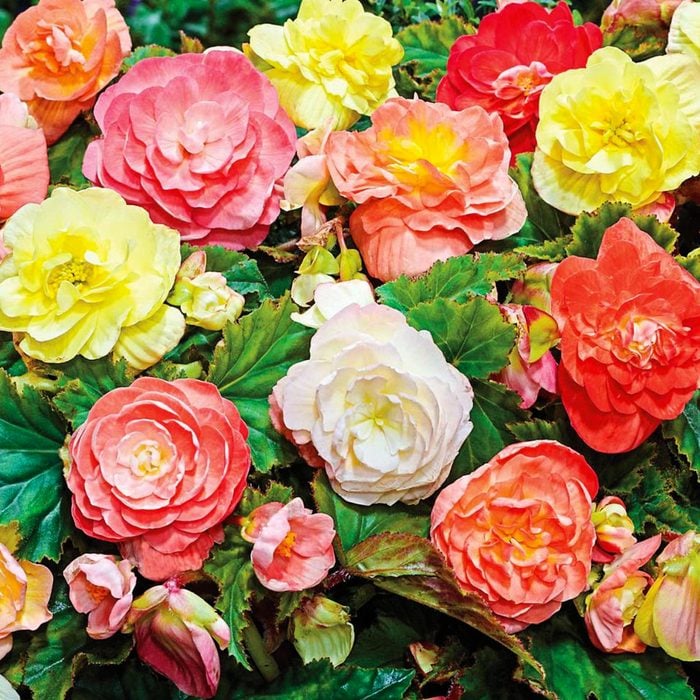 via homedepot.com
via homedepot.com
Tuberous begonias (Begonia × tuberhybrida voss)
These flowers are popular for the variety of hues of their blooms: red, orange, yellow, white, salmon, or pink. Tuberous begonias blossom throughout the summer, thriving in shady spots with dappled sunlight where few other plants with showy flowers and long bloom periods can grow. Keep these 13 things your landscaper won’t tell you in mind when you’re picking which of these gorgeous plants to put in your yard.
Sources:
- Rick Kingsbury, Landscape Designer and owner of Stoney Acres,a landscaping firm in Benton, Pennsylvania
- Luke Miller, Veteran Garden Editor and Designer
- Bryan McKenzie, Landscape designer, avid gardener, and co-founder of Bumper Crops Times
